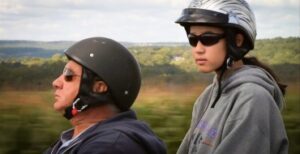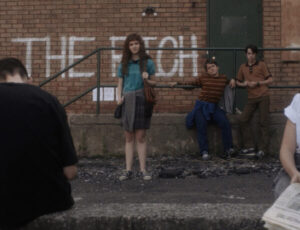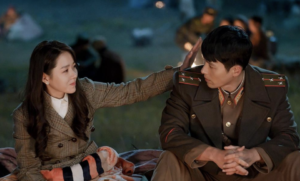The punishing effects of heavy rains and flooding in Calgary and more recently, Toronto, are still fresh in our collective memory. It seems like the perfect time to sit down for a little climate change refresher course, and check out Chasing Ice on Netflix. The documentary focuses on the state of the planet’s glaciers, which are rapidly disappearing, and one photographer, who is working to capture these vanishing landmarks. The film touches on love for nature, the impacts of climate change, the beauty of the Earth’s ancient landscapes, and the capacity for people to try and make a difference.
Chasing Ice follows environmental photographer, James Balog, and a project he undertook for National Geographic in 2005. His mission: capture images of glaciers from around the world, and how they change over the time. Balog places cameras in Greenland, Iceland, Alaska, and Montana, and sets them to take time-lapse photos every day over the course of three years. The results demonstrate the effects of climate change in a way that sent chills of wonder and fear down my back. The rate at which some of these glaciers are disappearing is just heartbreaking. Balog has a passion for his work, and his drive to increase the understanding of the immense consequences of our actions upon the environment makes his quest all the more pressing
Running at just an hour and fifteen minutes, Chasing Ice packs in enough facts and powerful landscape imagery to make its point without coming across as too heavy handed. For many people, I doubt glaciers would be considered an inherently interesting topic, however, after watching this film I can understand Balog’s obsession with these dwindling giants. It is his talent as a photographer that makes Chasing Ice so engrossing. When confronted with their sheer ancient majesty, it is hard to picture anything more beautiful than the textured and multi-coloured walls of ice. He has captured pieces of Earth’s history, which are melting away more quickly than most of us know.
This film also perfectly encapsulates the sheer frustration of society’s pervasive unwillingness to modify its damaging behaviour for the sake of the planet and future generations. In the film, it is noted that climate change denial is still rampant, yet nearly all scientists believe climate change is occurring; and there is no longer debate in the scientific community regarding its existence. Climate denial is compared to a patient with a rotted tooth. If nine out of ten dentists tell you the tooth is rotten, but there is still one dentist who says that it might be fine, who are you going to believe? Would you keep the tooth, or would you do something about it and pull it?
As frustrating as all this may be, it thankfully does not seem to be stopping Balog, who takes his photos to various events such as TED and speaks about his findings. The film shows some testimonials from those in the audience of his talks, including one from a man who used to work for Shell before his conscious got the better of him.
For the audiences that will be attracted to this film, the information presented really isn’t anything new. It’s the same tired figures that get dragged out when a word of climate change is breathed. However, the astounding visuals illustrating the pure, raw beauty and sadness of our changing landscape sets Chasing Ice aside as a must-see.







